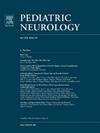耐药性局灶性、多局灶性和全身性癫痫小儿和青少年患者的反应性神经刺激:单中心经验。
IF 3.2
3区 医学
Q2 CLINICAL NEUROLOGY
引用次数: 0
摘要
背景:反应性神经刺激(RNS)被用于抗药性癫痫(DRE)儿科患者的标签外治疗。我们的研究旨在评估 RNS 对局灶性、多灶性和全身性 DRE 的儿科和年轻成人患者的安全性和有效性:2017年12月至2022年期间在犹他州盐湖城初级儿童医院接受RNS植入的所有患者:共回顾性地确定了 47 名患者,其中 32 名患者被纳入最终分析。患者年龄从 5 岁到 21 岁不等(小儿 22 人,年轻成人 10 人),植入 RNS 时患有局灶性(20 [63%])、多灶性(8 [25%])和全身性(4 [12%])DRE。手术并发症(3 [9%])和不良副作用(6 [19%])均较轻微。在最近一次门诊就诊时(平均 18.6 个月,标准偏差 13.9),32 名患者中有 19 人(59%)有反应,癫痫发作频率减少了≥50%(儿童 14 人,年轻成人 5 人)。随着 RNS 刺激激活时间的延长,有反应者的比例也在增加,24 个月后达到 71%(7 名患者中的 5 名)。5名患者(16%)减少了抗癫痫药物的使用,10名患者(31%)减少了癫痫发作抢救药物的使用。15名(47%)患者的生活质量得到改善:结论:RNS 植入可持续降低大多数患者的癫痫发作频率,且副作用极小。综上所述,我们的数据表明,RNS 是治疗小儿和年轻成年人局灶性、多灶性和潜在全身性 DRE 的一种有效而安全的方法。本文章由计算机程序翻译,如有差异,请以英文原文为准。
Responsive Neurostimulation in Pediatric and Young Adult Patients With Drug-Resistant Focal, Multifocal, and Generalized Epilepsy: A Single-Center Experience
Background
Responsive neurostimulation (RNS) is used off-label in pediatric patients with drug-resistant epilepsy (DRE). Our study aims to assess the safety and efficacy of RNS in pediatric and young adult patients with focal, multifocal, and generalized DRE.
Methods
All patients who underwent RNS implantation at Primary Children's Hospital in Salt Lake City, UT, between December 2017 and 2022.
Results
A total of 47 patients were retrospectively identified, of which 32 patients were included in the final analysis. Patients ranged in age from five to 21 years (pediatric n = 22, young adult n = 10) at the time of RNS implantation with focal (20 [63%]), multifocal (8 [25%]), and generalized (4 [12%]) DRE. Operative complications (3 [9%]) and negative side effects (6 [19%]) were minor. At the time of most recent clinic visit (mean 18.6 months, S.D. 13.9), 19 of 32 patients (59%) were responders with ≥50% reduction in seizure frequency (pediatric n = 14, young adult n = 5). The rate of responders increased with prolonged activation of RNS stimulation, reaching 71% (five of seven patients) after 24 months. Antiseizure medication was reduced in five (16%) patients, and seizure rescue medication usage was reduced in 10 (31%) patients. Quality of life improved in 15 (47%) patients.
Conclusions
RNS implantation resulted in a sustained reduction in seizure frequency with minimal side effects in a majority of patients. Taken together, our data suggest that RNS is an effective and safe treatment option for focal, multifocal, and potentially generalized DRE in the pediatric and young adult population.
求助全文
通过发布文献求助,成功后即可免费获取论文全文。
去求助
来源期刊

Pediatric neurology
医学-临床神经学
CiteScore
4.80
自引率
2.60%
发文量
176
审稿时长
78 days
期刊介绍:
Pediatric Neurology publishes timely peer-reviewed clinical and research articles covering all aspects of the developing nervous system.
Pediatric Neurology features up-to-the-minute publication of the latest advances in the diagnosis, management, and treatment of pediatric neurologic disorders. The journal''s editor, E. Steve Roach, in conjunction with the team of Associate Editors, heads an internationally recognized editorial board, ensuring the most authoritative and extensive coverage of the field. Among the topics covered are: epilepsy, mitochondrial diseases, congenital malformations, chromosomopathies, peripheral neuropathies, perinatal and childhood stroke, cerebral palsy, as well as other diseases affecting the developing nervous system.
 求助内容:
求助内容: 应助结果提醒方式:
应助结果提醒方式:


